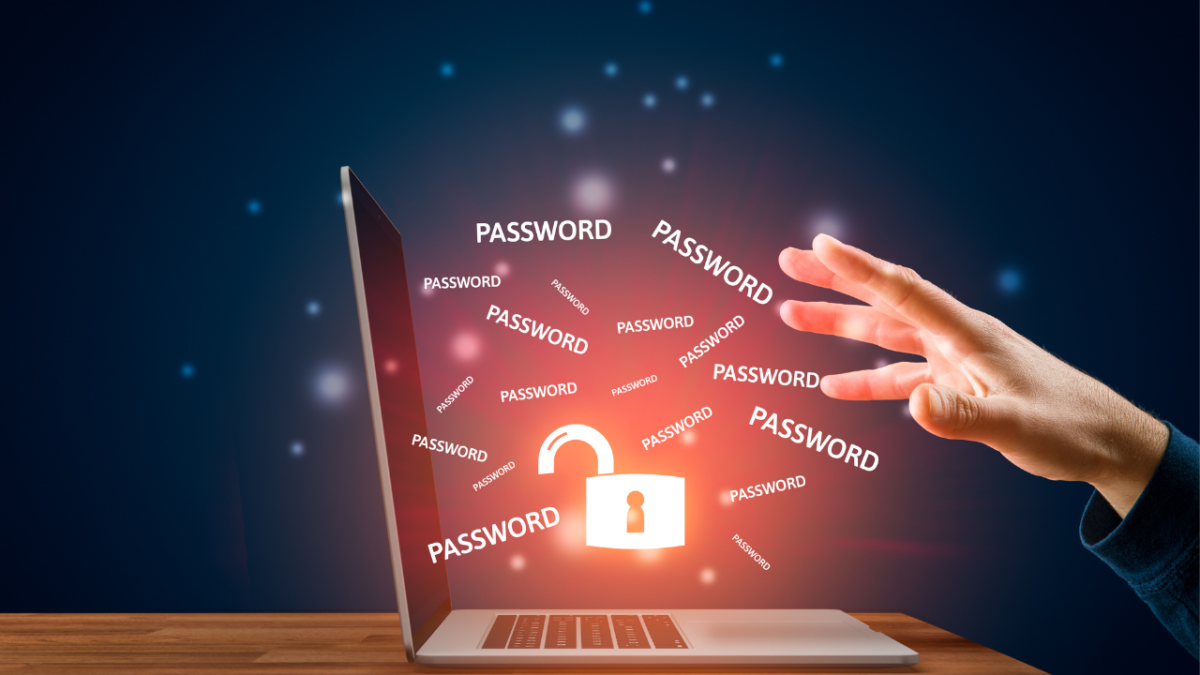Cybersecurity threats are becoming more common and sophisticated, posing a significant risk to businesses of all sizes. These threats can lead to data breaches, financial loss, and reputational damage. As technology advances, cybersecurity risks will only continue to grow, and businesses need to be aware of the threats they face and take steps to combat them.
One of the most significant cybersecurity threats facing businesses today is phishing. Phishing attacks use social engineering techniques to trick employees into divulging sensitive information or clicking on malicious links. These attacks can be difficult to detect, leading to data breaches and financial loss. Businesses need to raise awareness among employees about the risks of phishing and provide training on how to identify and avoid these attacks.
Another major cybersecurity threat facing businesses is ransomware. Ransomware is malware that encrypts a victim’s files and demands payment in exchange for the decryption key. These attacks can devastate businesses, resulting in significant financial damage and loss of important data. Businesses combatting ransomware should implement robust backup and recovery procedures and ensure all software updates with the latest security patches.
Understanding the Cyber Threat Landscape
As technology advances, the threat landscape for businesses becomes more complex and sophisticated. Cybercriminals constantly find new ways to exploit vulnerabilities and gain unauthorized access to sensitive information. Understanding the cyber threat landscape is crucial for businesses to develop effective cybersecurity strategies.
Rise of Ransomware and Malware
Ransomware and malware are among the most common cyber threats facing businesses today. Ransomware is malware that encrypts a victim’s files and demands payment in exchange for the decryption key. Malware, on the other hand, is a broad term that refers to any malicious software designed to harm a computer system, network, or device.
According to a survey by PwC, 64% of CISOs and CIOs expect a jump in reportable ransomware and software supply chain incidents in the second half of 2021. To combat these threats, businesses should implement strong security measures such as firewalls, antivirus software, and regular updates. Additionally, it is important to regularly back up important data to minimize the impact of a potential ransomware attack.
Prevalence of Phishing and Social Engineering
Phishing and social engineering attacks are another common type of cyber threat. Phishing is a social engineering attack in which cybercriminals use fraudulent emails or websites to trick victims into providing sensitive information such as login credentials or financial information. On the other hand, social engineering attacks involve manipulating individuals into divulging sensitive information or performing actions that could compromise security.
To protect against these threats, businesses should implement strong email security measures, such as spam filters and email authentication protocols. Additionally, educating employees on how to identify and avoid phishing and social engineering attacks is important.
Insider Threats and Human Error
Insider threats and human error are also major cybersecurity concerns for businesses. Insider threats refer to threats posed by employees, contractors, or other individuals with access to sensitive information. Human error, on the other hand, refers to employee mistakes that can compromise security.
To deal with this, businesses should implement strict access controls and regularly monitor employee activity. Additionally, it is important to provide regular cybersecurity training to employees to help them identify and prevent potential threats.
Advanced Persistent Threats and State-Sponsored Attacks
Advanced persistent threats (APTs) and state-sponsored attacks are among the most sophisticated and dangerous cyber threats. APTs are long-term, targeted attacks designed to gain access to sensitive information. On the other hand, state-sponsored attacks are carried out by governments or other state actors for political or strategic purposes.
To protect against these threats, businesses should implement advanced security measures such as intrusion detection and response systems, network segmentation, and regular vulnerability assessments.
Additionally, it is important to stay up-to-date on the latest cybersecurity threats and trends to ensure that security measures are effective and up-to-date.
Strategies for Protecting Sensitive Data
Cybersecurity threats are rising, and businesses must proactively safeguard their sensitive data. Robust permission rules, data encryption, and secure backups can help protect against data breaches and other cyber attacks. Compliance with regulations and standards is also crucial to ensure that businesses meet the necessary data protection requirements.
Implementing Strong Access Controls
One of the most effective ways to protect sensitive data is by implementing a robust permissions structure. This includes using strong passwords and multi-factor authentication to ensure only authorized personnel can access sensitive information. Businesses should also regularly review and update their user access controls to ensure they are effective and up-to-date.
Data Encryption and Secure Backups
Data encryption is another crucial strategy for protecting sensitive data. Encryption can help prevent unauthorized access to data, even if it is stolen or intercepted. Businesses should also create secure data backups to ensure that they can be recovered during a data breach or other cyber attack. Backups should be stored securely and regularly tested to ensure they work properly.
Compliance with Regulations and Standards
Compliance with regulations and standards is critical for businesses to protect sensitive data. Regulations such as the General Data Protection Regulation (GDPR) and the California Consumer Privacy Act (CCPA) require businesses to take specific measures to protect personal data.
Businesses should also comply with industry-specific standards such as the Payment Card Industry Data Security Standard (PCI DSS) to ensure that they meet the necessary data protection requirements.
In conclusion, protecting sensitive data is a crucial aspect of business cybersecurity. Strong access controls, data encryption, and secure backups can help protect against data breaches and other cyber attacks. Compliance with regulations and standards is also critical to ensure that businesses meet the necessary data protection requirements.
Developing a Robust Cybersecurity Framework
Developing a robust cybersecurity framework is essential to combat the top cybersecurity threats facing businesses today. A cybersecurity framework is a set of guidelines that an organization can follow to manage and reduce cybersecurity risk.
Incident Response and Recovery Planning
One of the most critical components of a cybersecurity framework is incident response and recovery planning. In a cyber-attack, having a well-defined plan can help minimize the damage and reduce downtime. The incident response plan should include steps such as identifying the type of attack, containing the damage, and restoring systems and data. Regular testing of the plan is also essential to ensure its effectiveness.
Regular Security Audits and Vulnerability Assessments
Regular security audits and vulnerability assessments are crucial to identifying weaknesses in an organization’s security measures. An independent third party should conduct these assessments and should include a review of the organization’s policies, procedures, and security tools. Once vulnerabilities are identified, remediation plans should be implemented to address them.
Employee Training and Security Awareness Programs
Employees are often the weakest link in an organization’s cybersecurity strategy. Regular training and awareness programs can help reduce the risk of cyber attacks caused by human error. These programs should cover phishing scams, password hygiene, and social engineering tactics.
In conclusion, developing a robust cybersecurity framework is critical to protecting an organization’s resources and data from cybersecurity incidents. By implementing incident response and recovery planning, regular security audits and vulnerability assessments, and employee training and security awareness programs, organizations can reduce their risk of cyber-attacks and minimize the impact of any incidents that do occur.
Emerging Technologies and Future Considerations
As businesses adopt cloud computing and remote work, they face new cybersecurity challenges. Emerging technologies, such as artificial intelligence (AI), can help businesses detect and address these threats.
Adapting to Cloud Computing and Remote Work

Cloud computing and remote work have become increasingly popular in recent years. While these technologies offer many benefits, they also create new security challenges. For example, cloud services may need to be more secure than traditional on-premises solutions. Remote workers may also use unsecured networks, making it easier for hackers to access sensitive data.
To address these challenges, businesses must develop a comprehensive security strategy. This may include implementing multi-factor authentication, encrypting data, and monitoring network traffic. Businesses should also train employees on best practices for cloud services and remote work technologies.
Leveraging Artificial Intelligence for Threat Detection
AI is a powerful tool for detecting and addressing cybersecurity threats. Machine learning algorithms can analyze large volumes of data to identify patterns and anomalies that may indicate a security breach. AI can also automate threat response, allowing businesses to respond to threats faster and more effectively.
To leverage AI for threat detection, businesses must first collect and analyze large amounts of data. They must also develop algorithms that can accurately identify threats without generating too many false positives. Finally, businesses must integrate AI into their security infrastructure to ensure it works seamlessly with other security solutions.
Addressing Challenges with Third-Party Vendors
Many businesses rely on third-party vendors for cloud services, software, and other technologies. While these vendors can provide valuable services, they create new security risks. For example, a vendor may have access to sensitive data or be vulnerable to cyber-attacks.
To address these risks, businesses must carefully vet their vendors and ensure strong security measures are in place. They should also establish clear guidelines for vendors’ access and use of sensitive data. Finally, businesses should monitor their vendors closely to ensure they comply with security policies and procedures.
Overall, emerging technologies offer many opportunities for businesses to improve their cybersecurity posture. However, businesses must also be aware of the new risks that these technologies create and take steps to address them. Businesses can stay ahead of the evolving threat landscape by developing a comprehensive security strategy and leveraging AI and other emerging technologies.



